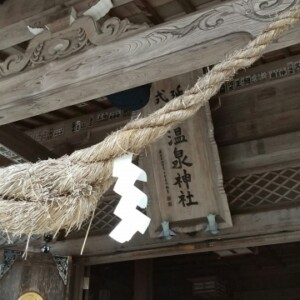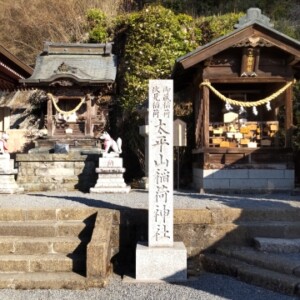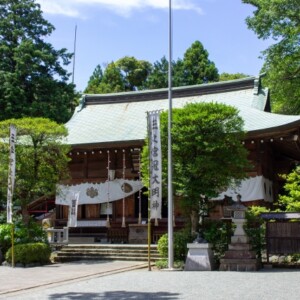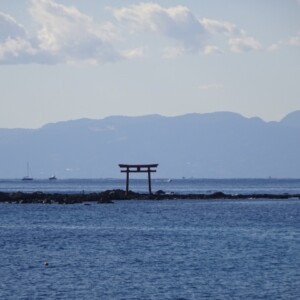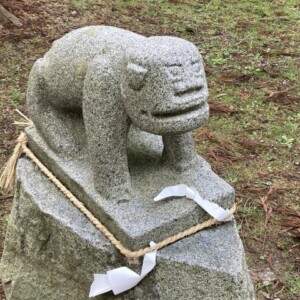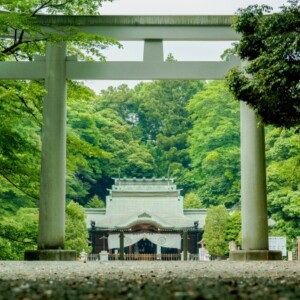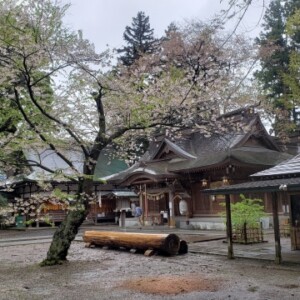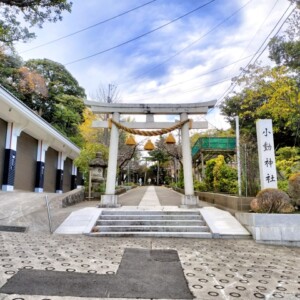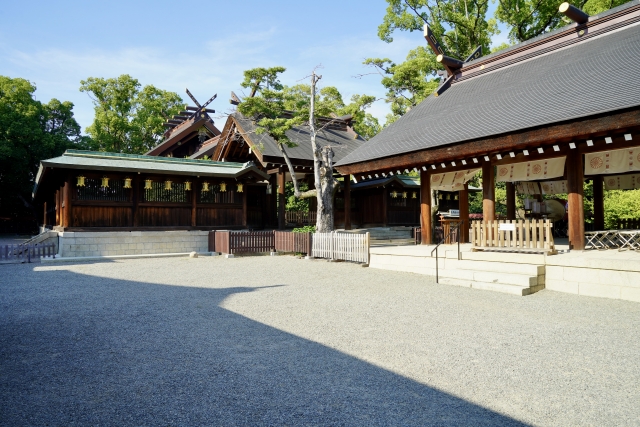
Otori-taisha|Detailed information on the history, highlights, and worship at Izumi-no-Ichimiya Shrine in Izumi-no-kuni
Otori Taisha Shrine, located in Nishi-ku, Sakai City, Osaka Prefecture, is the oldest shrine in Izumi-no-kuni with a history of approximately 1,900 years, and has long been worshipped by many people. It is known for the myth that the spirit of Takemikoto of Japan descended as a swan, and is a sacred space surrounded by a rich forest called Chikusa-no-mori. We will introduce the charms of Otori Taisha, which occupies a prestigious position as the head shrine of all Otori shrines in Japan.
Outline and basic information about Otori Taisha Shrine
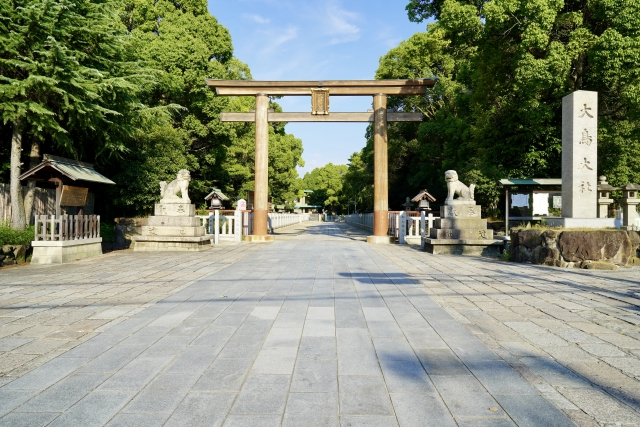
Otori Taisha, officially called Otori-jinja Shrine, is a historic shrine listed as Meishin-taisha in the Engi-shiki Shinmei-chou (Engi-shiki divine name book) completed in 927 (the 5th year of Ensho). As the first shrine in Izumi-no-kuni, it attracts many worshippers not only from the Senshu area but also from all over Japan. The shrine grounds are vast, covering an area of about 15,000 tsubo (about the size of the Tokyo Dome), and the sacred area covered with dense forest is called “Chikusa no Mori,” creating a mysterious atmosphere despite its location in an urban area.
History and Origin
The foundation of Otori-taisha Shrine is said to date back to the 43rd year of Emperor Keiko (113), and its origin is deeply related to the swan legend of Nihon no Muson (the Swan). As the son of Emperor Keiko, Nihon no Muson was an ancient hero who, under the command of his father, conquered Kumaso in his western expedition and pacified the eastern part of Japan in his eastern expedition. However, he became ill after being possessed by a raging god on Mount Ibuki, and died at Nokonno in Ise Province.
The spirit of the deity flew away from the mausoleum as a swan, first descending to Kotobikibaru in Yamato, then to Furuichi in Kawachi, and finally to Otori here. Legend has it that once the swan landed, various trees grew so thick overnight that it became impossible for the swan to fly away again. This is the origin of “Chigusa-no-mori,” and it is said that Otori-taisha Shrine began when a shrine was built here to worship the deity Nihon no Musunon.
The shrine has been revered by successive imperial families, and during the Nara and Heian periods, it received uninterrupted temporary offerings as one of 85 prayer shrines for disaster prevention and rain prayers, which were designated by the Shinto priests in times of national calamity. In 861, the 3rd year of the reign of Emperor Seiwa (861), the shrine was ordained to the 3rd rank of cousin, and was later promoted to the 1st rank of Shoichi.
Deities and Benefits
The main deities of Otori-taisha are Nihon no Musun and Otori-ren no Ancestral Deity. Originally the ancestral deity of the Otori-ren, there was a period when Amaterasu was considered the deity of the shrine. Later, the legend of the swan deity Nihon no Muson and the company name Otori were linked, and Nihon no Muson became the main deity of the shrine. In 1896, according to the government’s ritual deity study, the deity was changed to Otori-ren-sojin, but in 1961, in addition to Otori-ren-sojin, Nihon-buson was enshrined at the shrine.
Since the shrine enshrines Nihon Buson, a hero who won many battles in succession, it is believed to bring blessings for luck in victory, longevity of military fortunes, prosperous business, and traffic safety. The 600-year-old camphor tree on the east side of the shrine is called “Neagari-san” (meaning “root up” in Japanese), and is believed to bring good luck for prosperous business and fortune. The shrine attracts many worshippers, especially when it comes to examinations, employment, sports, and other competitive events, and prizes such as a “good luck charm to see the future” and “victory fortune” are also popular.
Otori-taisha Shrine Highlights and Features
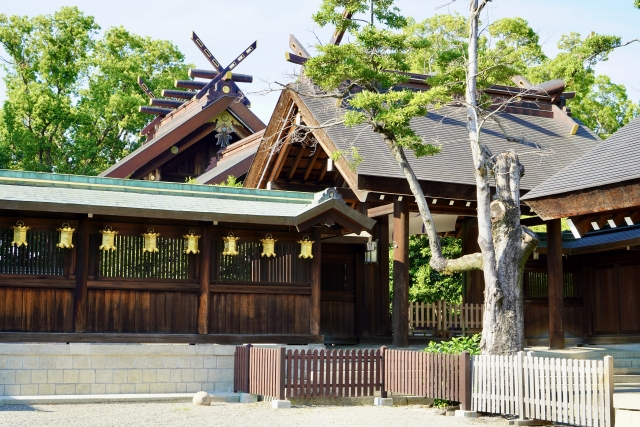
The charm of Otori-taisha Shrine lies in the harmony of the shrine’s historic architecture and its rich natural surroundings. Although located in a residential area, once you step into the shrine grounds, you will be surrounded by the deep greenery of the Chigusa Forest, a sacred space that seems to invite you into a mythical world.
Architectural and Structural Attractiveness
The main shrine of Otori-taisha is built in a unique architectural style called “Otori-zukuri,” which is said to be the second oldest after the Taisha-zukuri of Izumo-taisha Shrine. The Otori-zukuri is gabled, gabled, and has two rooms on both the front and sides. The entrance is in the center of the front, so there is no central pillar, and the interior is characterized by being divided into two rooms, one in the front and the other in the back. It differs from the osha-zukuri in that there is no central pillar and the floor is low, making it one of the ancient shrine architectural styles.
The current main hall was rebuilt in December 1909 and is designated as a tangible cultural property by Sakai City. It was once destroyed by fire during the Warring States Period and rebuilt in 1602 by Toyotomi Hideyori with Katagiri Katsumoto as magistrate, but was burnt to ashes again during the Battle of Osaka, and was later destroyed by lightning.
The hall of worship is a massive structure with a thatched roof, and is a sacred place where formal worship and prayers are held. In front of the hall of worship is an unusual octagonal pillar torii gate, another distinctive structure of Otori Taisha. A statue of the deity Takemikoto of Japan has also been erected in the precincts of the shrine, attracting the attention of worshippers.
Chikusa Forest and Natural Beauty
The shrine grounds of Otori-taisha are called “Chigusa-no-mori,” which derives from the legend that various trees grew thick overnight when a swan, the spirit of Takemikoto, landed on the shrine grounds. Although located in an urban area, the vast grounds of the shrine are lined with ancient trees and offer beautiful scenery from season to season.
Of particular note is a 600-year-old camphor tree standing tall on the east side of the main shrine. This sacred tree is popularly called “Nebagari-san” (meaning “root up” in Japanese), and is believed to bring good luck for prosperous business and fortune because of its unique shape with its roots rising above the ground. There is a shrine and torii gate around the tree, and many worshippers join their hands in front of the sacred tree.
There used to be an iris garden in the precincts of the shrine, where visitors could enjoy beautiful irises during the Iris Festival in mid-June. Currently, the iris garden is closed to the public due to damage caused by Typhoon No. 21 in 2018, but the “Association for the Revival of the Iris Garden at Otori Taisha” has been formed, and beautification activities are underway led by local residents and the Shinto priest, with hopes for its revival in the future.
Important Cultural Properties and Collections
Otori Taisha Shrine is home to a number of valuable cultural assets and collections. The main shrine is protected as a tangible cultural property designated by Sakai City, and is highly valued for its academic value as valuable remains of the ancient architectural style of Otori-zukuri.
There are also many historical monuments in the precincts of the shrine. In particular, there is a monument to the poem “Kahikozo yo kaerihatenaba hikikakeri hagukumitate yo otori-no kami”, which was composed by Taira no Kiyomori on his way to Kumano in 1159 to pray for victory in battle. The poem was a prayer for victory in the Heiji War, and since the Taira clan actually won the war, this historical site is well known as a symbol of the blessings of luck in victory.
The monument also has value in the history of literature, as it contains a poem by Akiko Yosano, “Izuminaru my Ubusuna no Otori no Miyai no Sugi no Aoki Hitomura” (“The Blue Hitomura of Otori-no-Miyano-Musugi”). These monuments tell us that Otori Taisha has been loved by many cultural figures since ancient times and has been deeply involved in the history and culture of Japan.
Guide to Visiting the Shrine
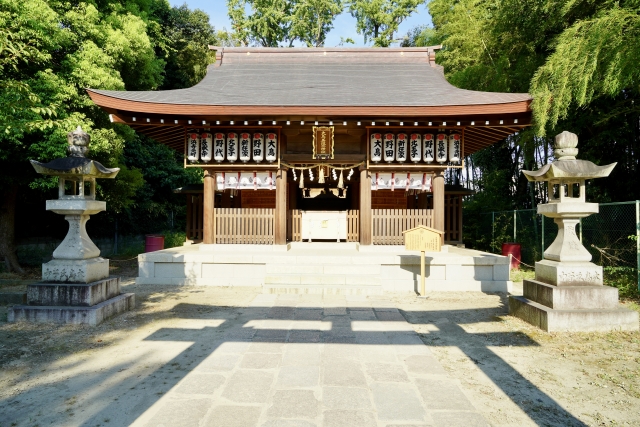
Otori-taisha Shrine is visited by many people throughout the year, especially by those who are preparing for a victory or a victory and those who wish to prosper in business. Visitors can purify their bodies and souls and receive the blessings of the deity Nihonmuson through worship in this sacred space.
Worship Etiquette and Manners
Worship at Otori-taisha Shrine is conducted in accordance with the general manners of shrine visits. Before entering the shrine grounds, bow at the Otorii gate in front of the shrine to enter the Shinto sanctuary. Walk on either side of the approach to the shrine, avoiding the center of the path, and purify your body and mind at the hand-watering basin before proceeding to the hall of worship.
To cleanse the hands, take the ladle with your right hand and cleanse your left hand, then switch to your left hand and cleanse your right hand. Then, change back to the right hand to receive water in the left hand, rinse out the mouth, cleanse the handle of the ladle, and return the ladle to its original position. It is recommended to pray in front of the hall of worship and to join hands in the same manner in front of the main shrine.
Since Otori-taisha Shrine is located in a residential area, it is important to be considerate of neighbors when visiting the shrine. Please refrain from visiting the shrine early in the morning or at night, and be sure to keep the temple grounds quiet and peaceful. Also, when taking photographs, please be careful not to disturb other visitors.
Annual and Seasonal Events
A variety of festivals are held throughout the year at Otori Taisha, the most famous of which is the Hanatsumatsuri held on the third Saturday in April. Hanatsumatsuri is a traditional festival that originated in the Heian period (794-1185) to pray for the prevention of illnesses and disasters, and to ward off epidemics when the cherry blossoms are in bloom.
On the day of the Hanatsume Matsuri, a procession of hanatsume-onna, shicho, juveniles, and flower carts parade from the Honan-cho Kaikan to the shrine in a manner reminiscent of a historical picture scroll. The procession of Hanatsume-onna dressed in brocade is especially beautiful and has become a springtime tradition that attracts many onlookers. In recent years, a “Hanatsumeichi” market has been held on the shrine grounds, featuring flower stores, general merchandise stores, kitchen cars, and other vendors, as well as ink painting demonstrations, taiko drumming, dance performances, and other events.
On the first Saturday of October, the Mihabi-sha regular festival is held, and 10 jiguris are lined up in front of Mihabi-jinja to be purified in a heroic ceremony known as the Hou Danjiri Festival. It is popular among the local people throughout the four seasons.
Red Seal and Good Luck Charm Information
At Otori-taisha Shrine, visitors can obtain a red seal with the seal “Yahiroshirotori” (meaning “White Swan” in Japanese) on it, referring to the legend that the Japanese god Takemikoto arrived at this shrine as a swan. The red seals are written with the utmost care, and seasonal red seals are also available, such as “Milky Way and Orihime-sama” in July and “Four Seasons of Otori” in April, both featuring cherry blossoms.
Of particular interest at Otori Taisha are Japan’s first “omamori amulet with a clear view of the future” and “omikuji with a clear view of the future,” both of which are available at the shrine. The “omikuji” (fortune telling talisman) is popular among visitors who want to have a clear view of the future in terms of entrance exams, employment, business development, etc. It is awarded to many visitors.
The “Katsumikuji” is also a gift unique to Otori-Taisha, and is popular for its unique style of picking out a Katsusukuji from a wooden box. The winner will receive a special mikuji stamped with gold leaf, which is very popular among visitors seeking luck in victory.
In addition, there is a wide selection of amulets for traffic safety, family safety, prosperous business, and academic achievement, allowing visitors to choose according to their life milestones and wishes. Red seal impression books are also available in Otori-taisha’s original design.
Access and Visiting Information
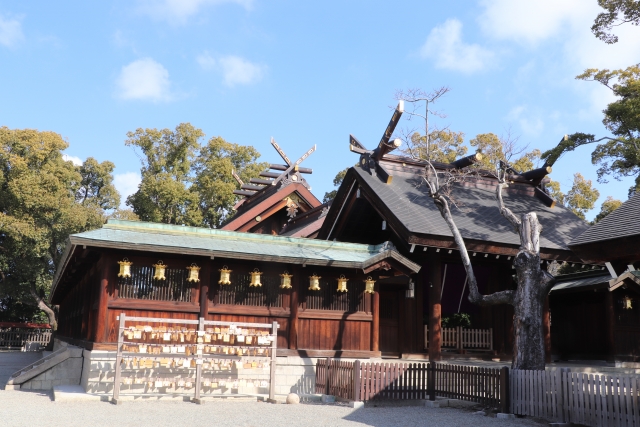
Otori Taisha Shrine is easily accessible from Kansai International Airport and is located in a key transportation hub in the southern Osaka area. You can visit the shrine by train, bus, or car, and access by train is especially convenient.
Traffic Access
The most convenient access is on foot from Otori Station on the JR Hanwa Line. Go straight down the stairs from the west exit of the station, turn left at the end of the street, and it takes about 3 minutes on foot. From Kansai International Airport, take the JR Kansai Airport Line bound for Tennoji, transfer to the JR Hanwa Line at Hineno Station, and it takes about 30 minutes to reach Hou Station.
Access is also possible by bus, with several Nankai bus lines available. From Sakai-Higashi Station, take the bus bound for Nishi Ward Office or Komyoike and get off at the Otori Kitaguchi bus stop, a 3-minute walk. Or, from Nishi Ward Office, take the bus bound for Ishizugawa Ekimae and get off at the Otori Jinja-mae bus stop, a 1-minute walk. There are also about 10 buses a day that go directly from Ishizugawa Ekimae to Otori Taisha-mae bus stop via Suwanomori Ekimae and Hamadera Koen Ekimae Dori.
To access by car, turn right at the Sakai Exit of the Hanwa Expressway toward the Oike-mae intersection. The shrine is also accessible from National Route 26 and Prefectural Route 210, and free parking is available on the grounds.
Address: 1-1-2, Horikita-machi, Nishi-ku, Sakai-shi, Osaka 593-8328
Hours of Operation, Fees, and Parking Information
The Otori Taisha Shrine opens at 5:30 a.m. from April 1 to September 30 and at 6:00 a.m. from October 1 to March 31, depending on the season. The gates close at 6:00 p.m. throughout the year. Entry to the shrine grounds is free of charge and visitors are welcome at any time.
Prayer requests are accepted from 9:00 a.m. to 4:30 p.m. No appointment is required. Prayer fees vary depending on the content of the prayer, so please inquire at the shrine office for details. Various prayers are offered for shrine visit, Shichi-Go-San, traffic safety, family safety, healing of illness, and so on.
Free parking is available for worshippers in the precincts of the shrine. It is located next to the Otorii gate and can accommodate approximately 50 standard-sized cars. However, public transportation is recommended during major festivals such as Hanataki Matsuri and Danjiri Matsuri, when crowding is expected.
The temple grounds are partially barrier-free, but because of the natural topography of the Chikusa Forest, visitors in wheelchairs are advised to consult with the shrine office in advance.
Reference Site
Official website of Otori-taisha Shrine: https://www.ootoritaisha.jp/



